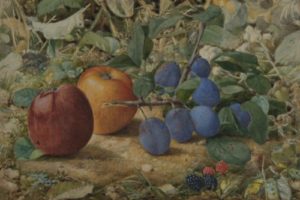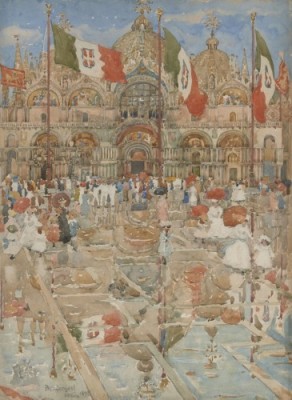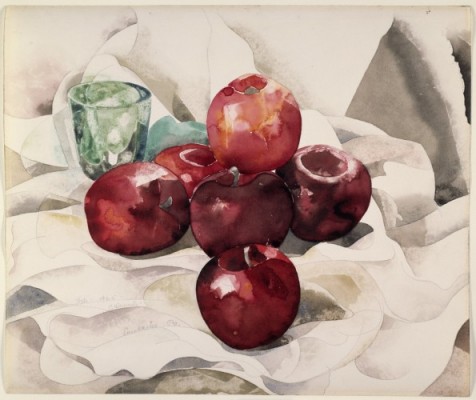 American Watercolor In the Age of Homer and Sargent, now on view at the Philadelphia Museum of Art, is an exhausting exhibition, in a good way. It displays more than 170 artworks and covers the period from the 1860s to 1925. It is, as the press release says, “the most comprehensive loan exhibition in over forty years devoted to the most important chapter in the history of watercolor painting in this country.”
American Watercolor In the Age of Homer and Sargent, now on view at the Philadelphia Museum of Art, is an exhausting exhibition, in a good way. It displays more than 170 artworks and covers the period from the 1860s to 1925. It is, as the press release says, “the most comprehensive loan exhibition in over forty years devoted to the most important chapter in the history of watercolor painting in this country.”
I spent more than two hours in the exhibition this weekend, and here’s the paradox: though I was ready to leave when I reached the final gallery–there’s only so much the eye can absorb–I wanted more. I wanted more because the show builds to a climax in the 1920s, the time when watercolor became the “American medium.” The best artists in other countries in that period were not using watercolor this way. But we were–Marin, Demuth, Burchfield, Dove and Hopper had made watercolor their primary medium, and other great artists like O’Keeffe put it on equal footing with oil.
 And yet this excellent exhibition–I can’t say enough about how good it is–gives us just one small gallery of works from that high point. One Burchfield, one Hopper, one Marin, two Demuths–no Doves. Two O’Keeffes on the same subject.
And yet this excellent exhibition–I can’t say enough about how good it is–gives us just one small gallery of works from that high point. One Burchfield, one Hopper, one Marin, two Demuths–no Doves. Two O’Keeffes on the same subject.
I am always loath to second-guess a curator, but here it feels as if Kathleen A. Foster, the museum’s senior curator of American Art, ended too abruptly at the story’s climax.
Space was not the issue, because the final gallery displays various papers used by Homer and Sargent, samples of watercolors mixed by the artists and those that come in prepared watercolor boxes. I’d rather have seen a Dove, a better Burchfield, etc.
Explaining process has become a feature of many exhibitions these days, but I question whether we needed that final gallery here, when most kids learn what a watercolor is. After all, the exhibit included videos showing processes–scraping, using salt, etc.–along the way.
 Watercolor exhibitions don’t come around all that often, as we all know. They can’t be exposed to light for long, and this show will not travel. It’s a pity that I–and I am sure that I am  not the only one–left wanting more. I can only hope that Foster or someone else will mount a comprehensive exhibition of Modernist watercolors and explain watercolor then went out of fashion.
Watercolor exhibitions don’t come around all that often, as we all know. They can’t be exposed to light for long, and this show will not travel. It’s a pity that I–and I am sure that I am  not the only one–left wanting more. I can only hope that Foster or someone else will mount a comprehensive exhibition of Modernist watercolors and explain watercolor then went out of fashion.
Meantime, see this exhibition if you can. Just because it’s not perfect doesn’t mean it’s not great. It is. I’ve posted three of my many favorites here: Apples and Plums by John William Hill (top); Splash of Sunshine and Rain (Piazza San Marco, Venice) by Maurice Prendergast (middle), Still Life: Apples and Green Glass by Charles Demuth (bottom).
Photo Credits: Courtesy of the Philadelphia Museum of Art.Â
